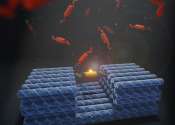Capturing DNA origami folding with a new dynamic model
Most people are familiar with the DNA double-helix. Its twisted ladder shape forms because the long pieces of DNA that make up our genome are exactly complementary—every adenine paired to a thymine, and every cytosine paired ...









